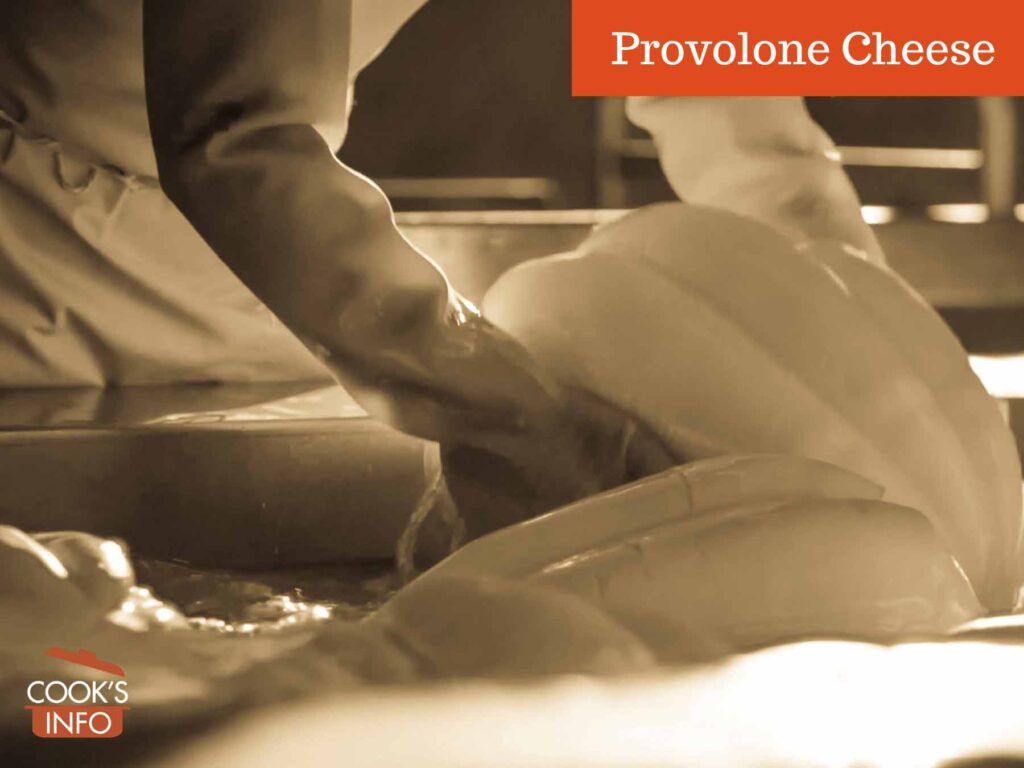Provolone is a semi-firm Italian cheese.
The outside of the cheese ranges from a light golden yellow to a golden brown. Inside, it is ivory-coloured. It has a mild flavour that sharpens as it ages.
The cheese has a cord tied around it, and is hung by that cord to cure and age in a room with a wood fire, giving it a somewhat smoky flavour. North American versions of Provolone appear to use liquid smoke to achieve the smoky taste.
It is made in various shapes and sizes. Northern Italian versions tend to be stronger tasting and harder than versions made in the south of Italy. Some northern versions — such as “Valpadana Mandarone” — are hard enough to grate.
In Europe, this is a PDO protected cheese.
Production
To make Provolone, whole cow’s milk is heated to 38 C (100 F). Whey from previous batches is added to act as the starter culture, along with rennet. The rennet used may be from a calf, a goat kid, or a lamb. When the milk has curdled, the curd is cut. Some of the whey is drained off. Part of this is heated to 65 C (150 F), then poured back on. The remaining whey that was drained off is then poured back on, unheated, to cool it back down. The curd is drained, kneaded, washed with water and salted.
Cooking Tips
Provolone can be sliced or shredded. Some specialty aged ones can be grated.
History Notes
Provolone is yet another cheese for which speculative claims dating it back to the Romans are made, with no real backing.



